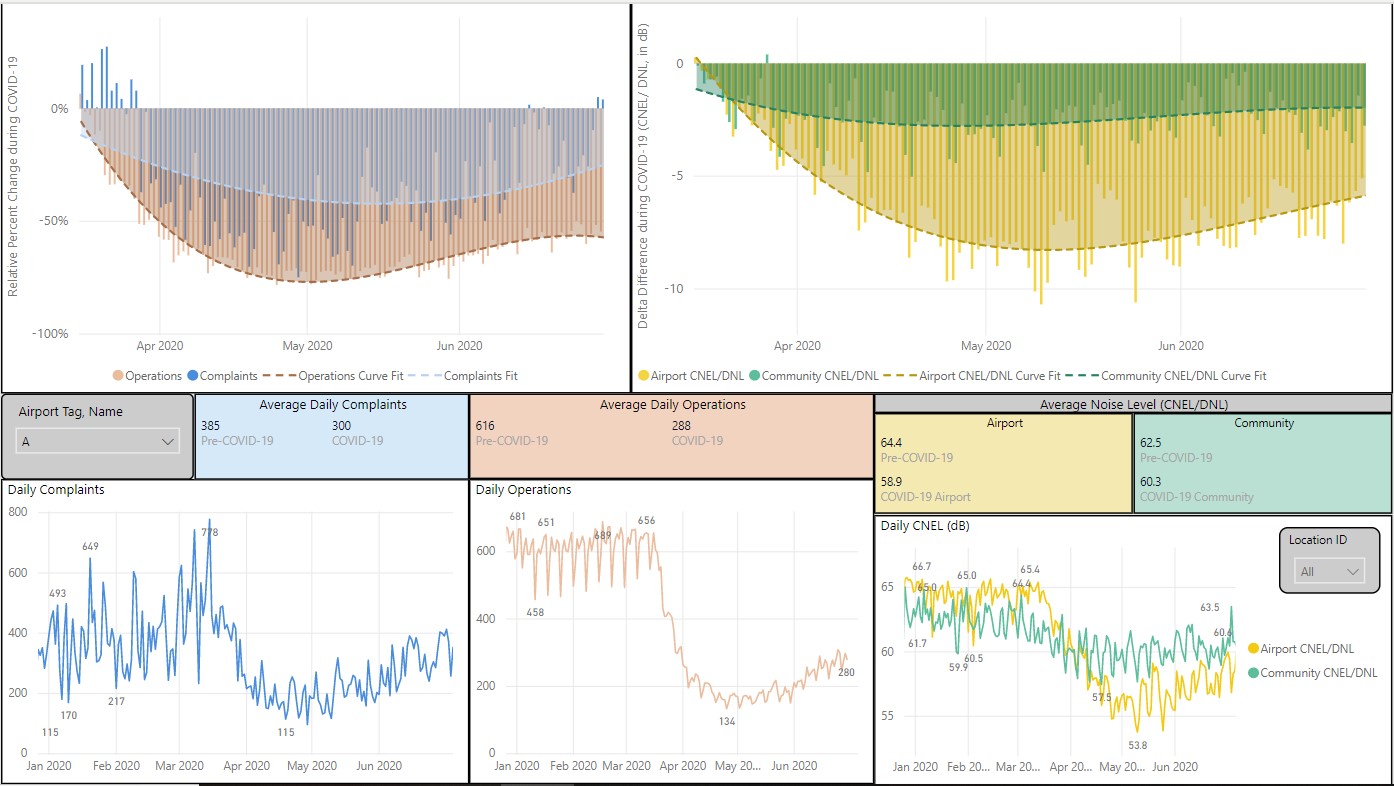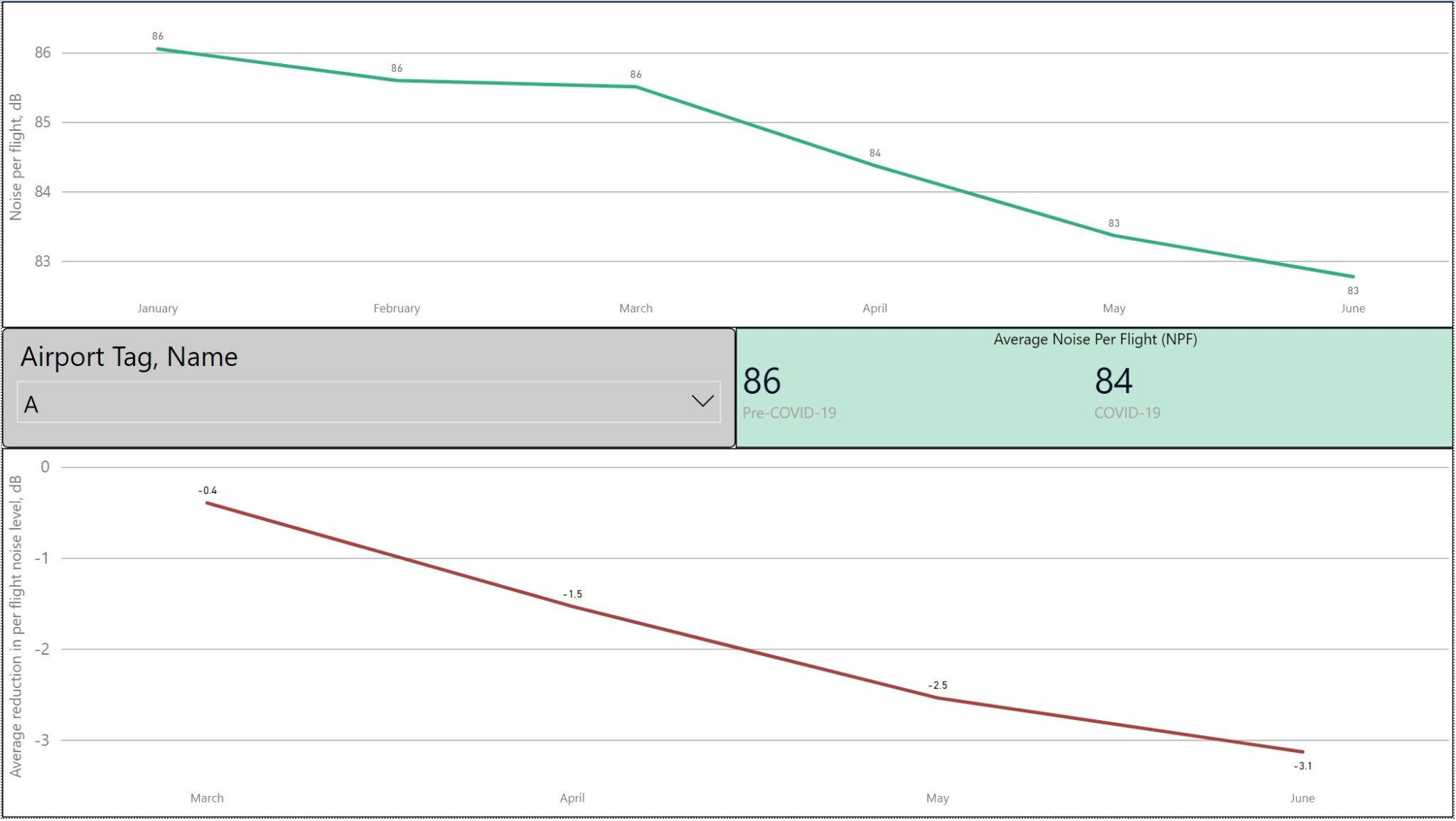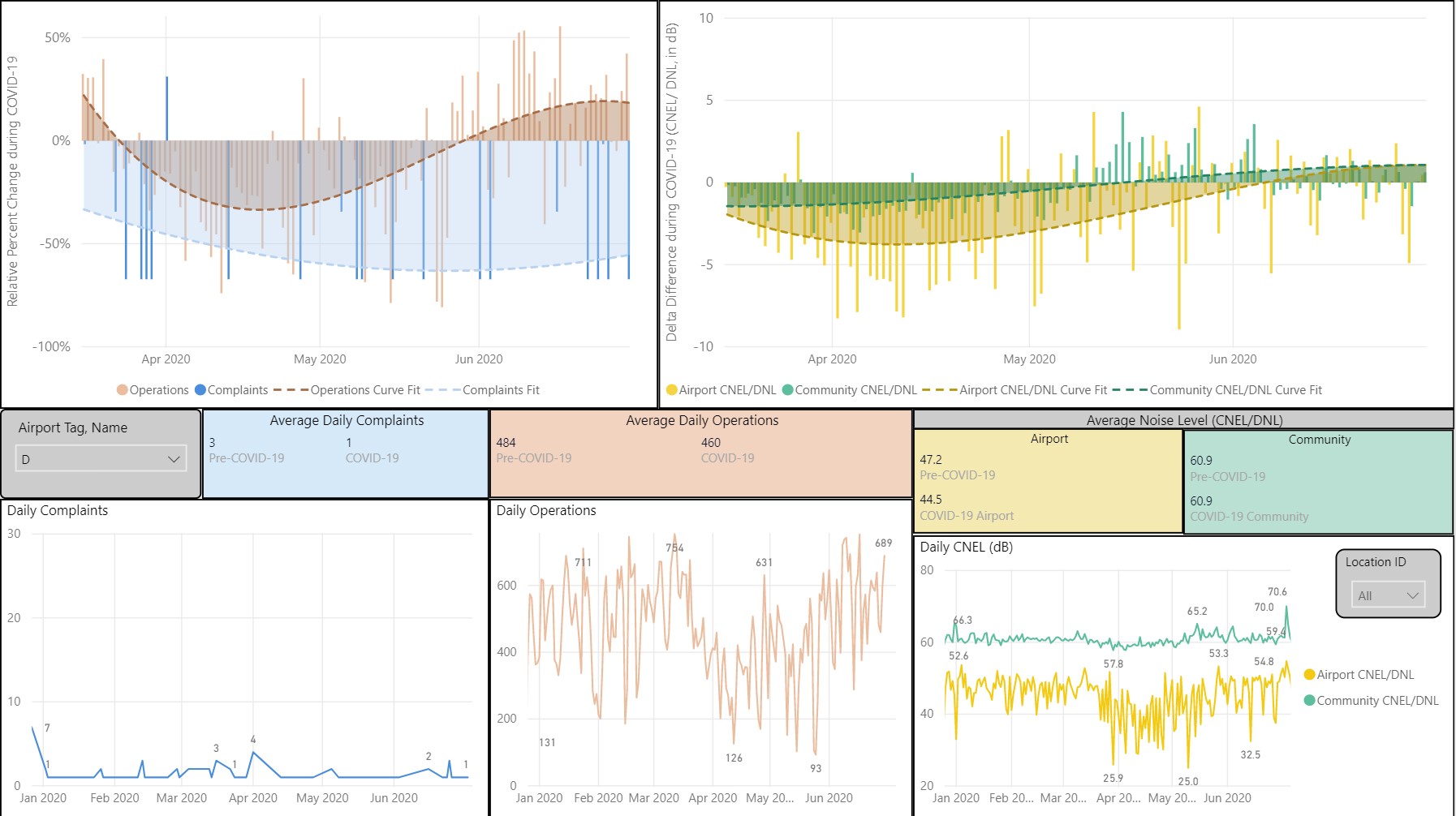Will we see permanent noise reduction from the COVID-19 pandemic?
08.27.2020 | HMMH |I was invited to share HMMH’s preliminary findings of operations, noise, and complaint data analysis during the COVID-19 pandemic with the Florida Airports Council earlier this week. Here is a summary of that presentation.
When airports first started shutting down in March, I was reminded of 2001 when we had a unique opportunity to learn what community noise levels around airports were like in the absence of aircraft noise. I had an idea to work with our airport partners and Envirosuite to examine operations, noise, and complaint data in a kind of “before” and “after” trial. Little did I know back in March that we’d still be at such low traffic levels today. Since March, our analysis has looked not only at the community noise levels without aircraft noise but at how traffic levels, noise levels, and complaints are coming back – quickly in some cases and slowly in others – to their pre-pandemic levels.
We set about to answer two research questions:
- How do changes in operations compare with changes in noise levels since the start of pandemic?
- How do changes in operations and noise levels compare with changes in noise complaints since the start of pandemic?
For purposes of data collection and analysis, we somewhat arbitrarily defined the “Pre-COVID” period as November 1-March 15; and the “COVID” period as March 16-June 30. We have seen that at several airports, traffic didn’t really drop off until after March 15, but we think that’s a reasonable estimate, as that is when many states implemented states of emergency.
We imported three sets of raw data for each airport from their NOMS database:
- Hourly complaint data
- Daily cumulative noise levels – in the case of these two airports, CNEL, but at FL airports it would be DNL – at each monitoring location
- Hourly aircraft operational levels
Once the data were imported, we used Microsoft Power BI to fit our data to a polynomial curve. The results for a large commercial airport (Airport ‘A’) are shown in the figure below. The data shows the following:
- Complaints, operations, and noise levels all decreased beginning mid-March
- Daily operations dropped as much as 80% by mid-April; they recovered to 40% of pre-COVID-19 by end-June
- Noise complaints followed similar trends but did not drop as much percentage-wise
- Average airport cumulative noise levels have dropped by more than 5 dB during COVID
- Community noise levels dropped an average of 2+ dB
- Since late March, community noise has been higher than aircraft noise
 Airport A: Large Commercial Service Airport
Airport A: Large Commercial Service Airport
Since the start of the pandemic, airlines have retired a lot of older aircraft; we wanted to take a look at how that affects noise levels. The top of the figure below presents the average noise per flight – a simple index computed by dividing (logarithmically) the average noise level at all sites by the average number of operations – essentially a Sound Exposure Level (SEL) for a single event. The average has dropped from just over 86 dB in January to just under 83 dB in June. The bottom part of the graphic simply shows the difference compared to average pre-COVID noise per flight. If these changes in fleet mix are permanent, we will have achieved a major noise reduction. Another way to put it is that the pandemic effectively accomplished the Phase out of the remaining Stage 3 aircraft.
 Reduction in Noise per Flight
Reduction in Noise per Flight
We have also looked at data from several types of airports, including general aviation (GA). The findings at GA airports are strikingly different: in the figure below, operational levels have recovered almost completely since the early weeks of the pandemic and noise levels have returned to pre-COVID levels. These findings are consistent with anecdotal reports from clients around the country.
 Airport B: Busy General Aviation Airport
Airport B: Busy General Aviation Airport
I’d like to thank Justin Cook and Irene Ramirez for their data analysis; they have done virtually all of the technical work. HMMH has now partnered with several airports to examine these data.
If you would like us to include your data in our growing database, please contact Justin Cook.





